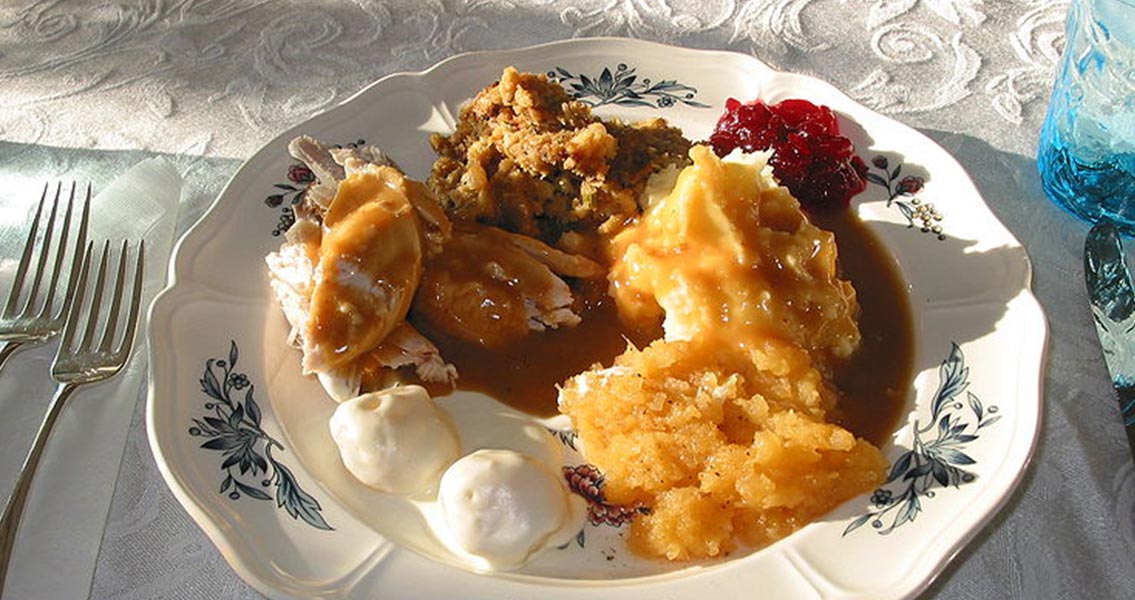<![CDATA[This Thursday people across the United States will celebrate Thanksgiving by feasting on delicious food and celebrating with their families. The national holiday marks a key event in the early settlement of Europeans in North America, and its history allows us to see the process by which Americans have formulated their historical and cultural identity. The tradition of celebrating Thanksgiving on a Thursday dates back to the first European colonisers of Massachusetts. Their annual post-harvest holiday was celebrated every autumn, usually on a Thursday as it was a mid-week day already set aside for church sermons and topical lectures. Like many religious and secular holidays, the timing of Thanksgiving is connected to the change of seasons and the collection of harvests. Events in the New Plymouth colony in 1621 provided the archetypal Thanksgiving story. A group of 101 Protestant settlers emigrated to the area aboard the Mayflower to escape the domination of the Church of England. Their aim had been to reach New York, although they had to settle in what is now Cape Cod, due to stormy weather in the Atlantic. A diverse mixture of Native American tribes had of course inhabited the East Coast long before the arrival of these settlers. The area where the Mayflower landed was home to the Wampanoag people, and had been for over 12,000 years. As the Mayflower settlers began to set up their colony, they were visited by a leader from the Wampanoag, who shared the ancient knowledge of his people with the settlers to help them grow corn and fertilise their land. In March 1621 a formal agreement was made between the settlers and the Wampanoag tribe, that saw them unite to fight off the threat of other tribes in the region. That Autumn, the two groups ate, danced and played games together for three days during the Thanksgiving festivities. Such an alliance and mutually beneficial relationship between Native Americans and Europeans would of course seem completely impossible just a few years later. As the century wore on Thanksgiving developed into an annual community tradition in New England. In 1777 the US Congress declared the first official America Thanksgiving, following a Patriot victory at the Battle of Saratoga. By 1863 the occasion had developed into a nationwide holiday. In the midst of the American Civil War, President Lincoln declared that Thanksgiving Day should fall on the last Thursday in November, setting the framework for the modern holiday. It should be noted however, that at this point Thanksgiving was still reliant on a presidential proclamation. This tradition was largely followed until 1939, when President Franklin D. Roosevelt declared the penultimate Thursday of November to be Thanksgiving. The move was hugely controversial, and many Americans elected to celebrate it on the last Thursday anyway. Roosevelt repeated the unpopular move in 1940, and again it was met with hostility. In 1941 he admitted his mistake, returned the holiday to its traditional date, and signed a bill officially making the last Thursday in November a national holiday. This established the holiday in law, removing the need for a presidential proclamation every year. The history of Thanksgiving allows us to see the development of a national holiday, and the process behind the creation of symbolism, identity and culture in US history. What started as a traditional seasonal feast in one region of the country has been fleshed out through circumstance and design with a unique mythology. This in turn has allowed it to become a key part of America's cultural identity.]]>
Thanksgiving – The Development of a Tradition
